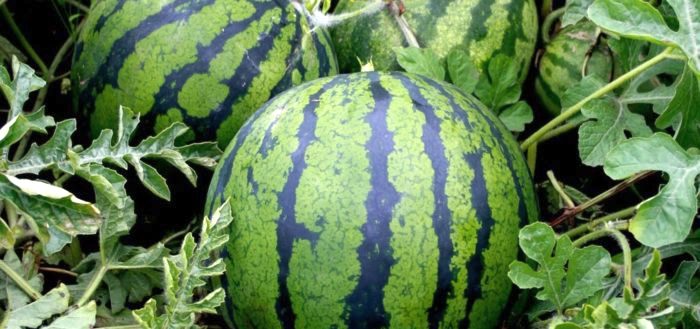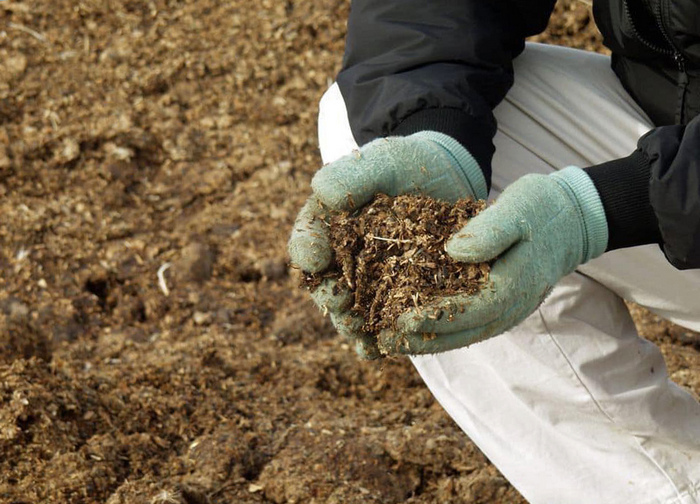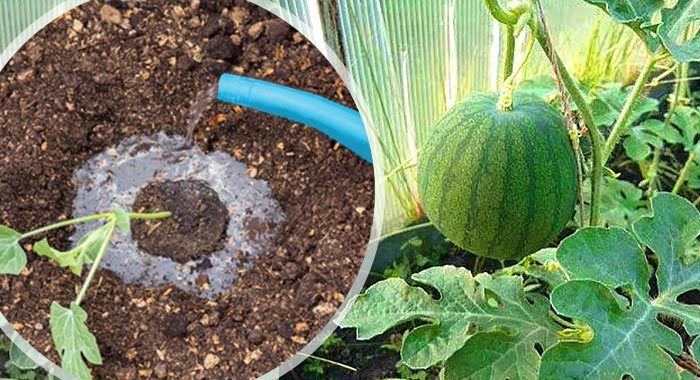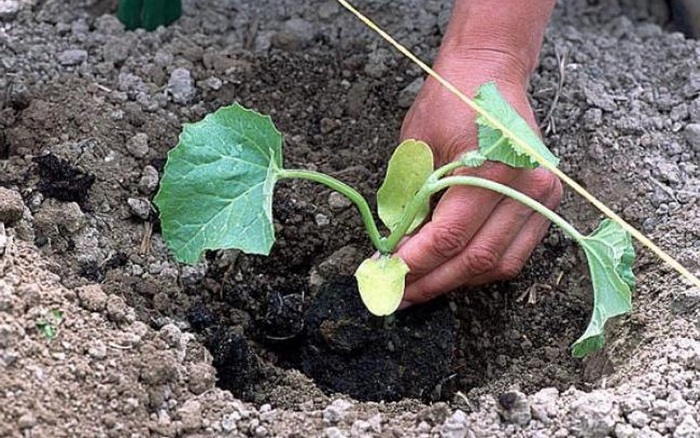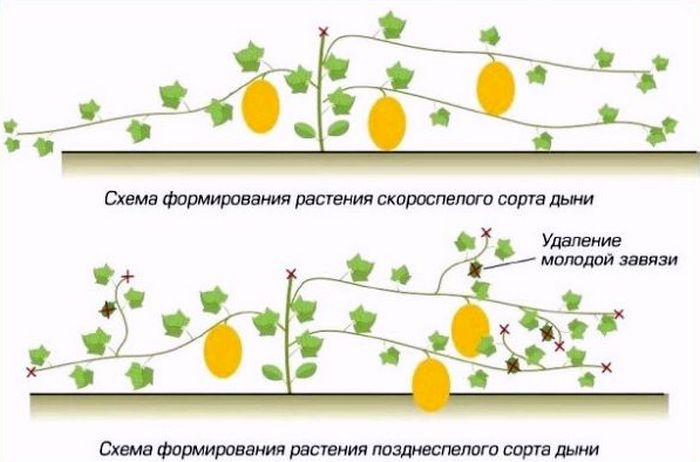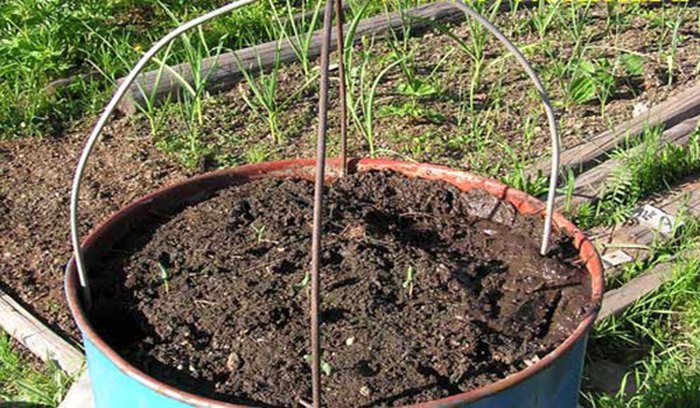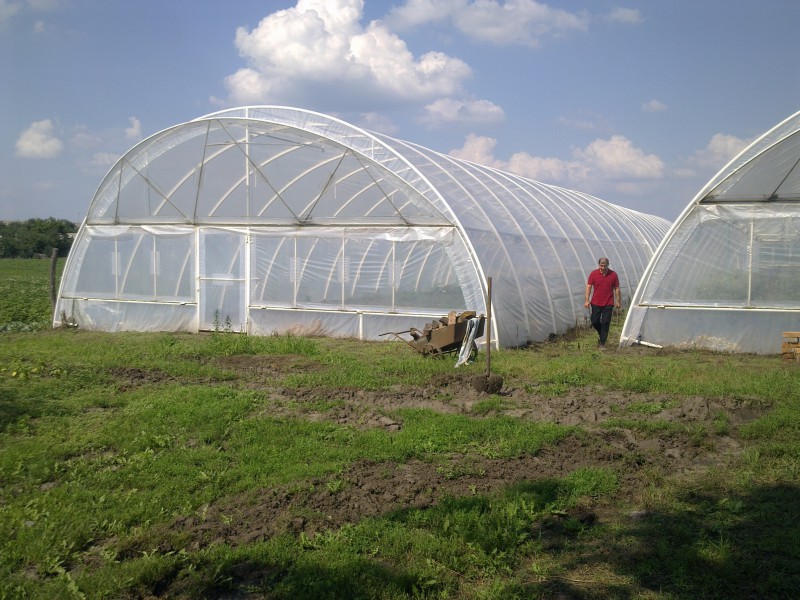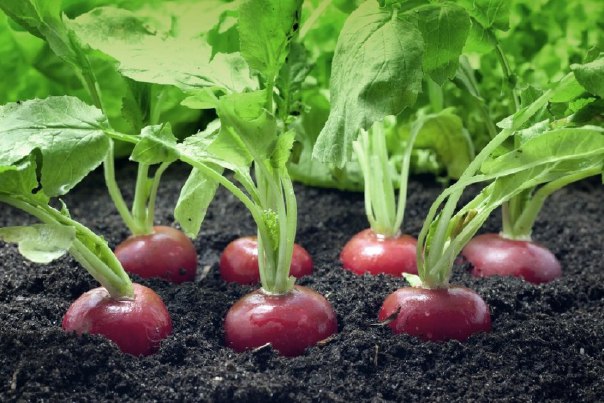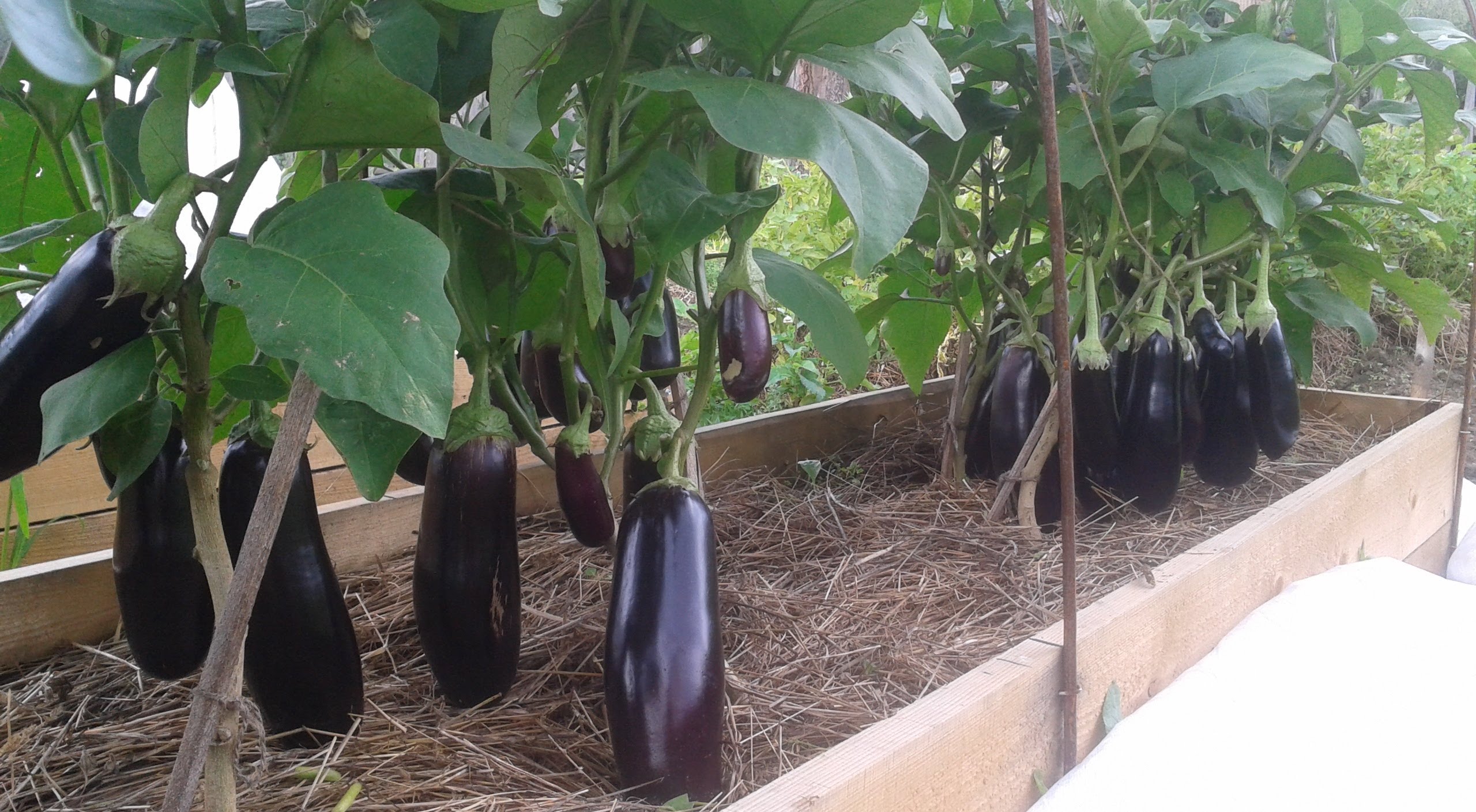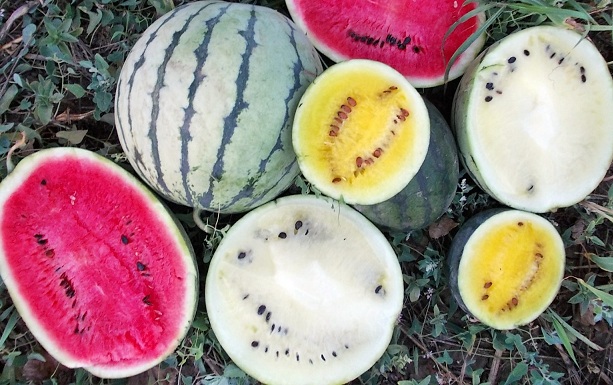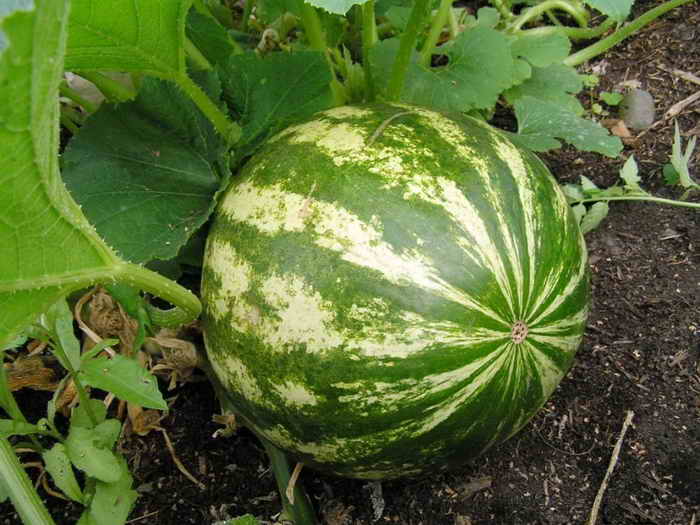Content:
The spread of agricultural crops to areas atypical for them implies the creation of new cultivation technologies. Watermelon and melon are cultivated mainly in greenhouses in cold conditions. The cultivation of melons in a barrel is also widely practiced.
Cultivation of watermelons and melons in the Urals and Transbaikalia
The cultivation of watermelons, melons and other melons and gourds in the Urals and Eastern Siberia is not an easy task, but real, subject to special agrotechnical methods and conditions.
Most varieties of these crops, which are capable of forming large fruits, up to 10 kg or more, are not suitable for the regions under consideration. Due to the short duration of the summer period, they simply do not have enough time for full ripening. After the formation of powerful dense lashes and peduncles, the temperature will decline. Plants will stop growing and developing and eventually die.
For the Urals and Transbaikalia, it is necessary to select varieties of melons and watermelons that combine resistance to low temperatures and early fruiting. An early ripe variety can be identified by the information that the manufacturer has placed on the package with seeds. Early varieties include those with a ripening period of 75-80 days from the date of planting. In mid-ripening, this indicator is 85-90 days, and in late ripening - from 90 days and more.
The best varieties of watermelons for these conditions include:
- Cinderella;
- Ultra early;
- F1 Gift to the North;
- Fire;
- Sibiryak, etc.
Agricultural technology for the cultivation of watermelons in the Urals and Transbaikalia
Watermelon is usually grown from seeds. However, in colder regions, a number of crops are often used as seedlings. Watermelons are also grown in this way in the Urals; cultivation in the open field in this cool region is unsafe.
Seed preparation
Knowing how to plant watermelons for seedlings in the Urals, you can significantly increase the chances of a good harvest. You need to prepare seeds from the second decade of April: sort and carry out pre-sowing treatment.
The first step is warming up. Watermelon seeds are spread in a thin layer next to heating devices and kept there for a week. The temperature should be moderate:
- + 25-30C for wet seeds;
- + 50-60C for dry seeds.
Soaking is followed by placing watermelon seeds in liquid. For this, a 3% solution of salt or ammonia, or heated ordinary water, is suitable. It is necessary to constantly maintain the water temperature at + 23-25C and stir the solution regularly. After three days, seeds that are not suitable for planting are discarded: they do not sink in liquid and float to the surface.
Then the inoculum is dipped in a 1% manganese solution for half an hour for disinfection. The disinfected seeds are dried by spreading them in a thin layer on a flat surface, after which they are ready for planting.
Growing seedlings
One of the main secrets of growing watermelons is the right soil. The following components should be present in the soil:
- ¾ buckets of humus;
- ¼ buckets of earth;
- 1 tablespoon of nitrogen and potassium fertilizers;
- 3 tablespoons of phosphate fertilizers;
- 1 glass of wood ash;
- 1 teaspoon potassium sulfate.
It is necessary to ensure a constant temperature in the room at about + 22-25C. Daylight hours are very short, so it is recommended to extend it to 12-14 hours using LB-40 lamps.
On the 10th day of cultivation, the seedlings are fed with mineral fertilizers in a complex form. Seedlings are ready to be transplanted into the greenhouse when 3-5 true leaves are formed.
Greenhouse preparation
Growing watermelons in the Urals in a greenhouse is considered the best cultivation method. A week before planting seedlings, one layer is removed from the soil with a depth of a shovel bayonet. Humus and hay are placed in the resulting trench, then nitrogen fertilizers are added and poured over with hot water. After manipulations, the top layer of soil is laid in place, applying black covering material to the plot.
Watermelon seedlings are planted when the soil in the greenhouse warms up to + 12-14C. Planting is carried out to a depth of 10 cm, the distance between plants is 0.5 m. Having figured out how to grow a watermelon in Transbaikalia, you need to choose suitable neighbors for it. It is recommended to grow the following crops near the watermelon:
- melons;
- cucumbers;
- bell pepper;
- tomatoes.
Planting care
Watermelon is a moisture-loving culture that prefers irrigation with heated water. Before flowering, watering is carried out every 2-3 days in the evening. Flowering plants are irrigated less often, since excess moisture will lead to cracking of the berries, their wateriness and a deterioration in taste. After flowering, watering is usually carried out after feeding, trying not to get water on the foliage and stems.
The first feeding of seedlings in the greenhouse is carried out a week later, when the soil dries out well enough. Dissolve 20 g of ammonium nitrate in 10 liters of water and pour 2 liters of solution into each well. Followed by two more dressings: before budding and after the formation of ovaries. To do this, use chicken manure, dissolved with water in a ratio of 1:10, and pour half a liter of the resulting product per well.
A week and a half after planting the seedlings, a wire is pulled along the plot, forming trellises. When the stem grows to 40 cm, it is tied to a wire. Fruits, ripe to the size of a large apple, are placed in special nets, which are also tied to a trellis.
When 2-3 berries the size of a chicken egg have formed on the lash, all other ovaries should be removed, since more watermelons will not be able to ripen.
Melons cultivation in the Urals and Transbaikalia
Agricultural technology has many similarities with the cultivation of watermelon in these areas. As in the first case, you must start with the correct selection of the early maturing variety. Suitable for the Urals and Transbaikalia:
- Sybarite's dream;
- Cinderella;
- Collective farmer;
- A pineapple;
- Iroquois;
- Tamanskaya;
- Gold of the Scythians F1.
Seed and soil preparation
Seed material is prepared for planting in the same way as in the case of a watermelon - the procedures for heating, soaking and disinfecting in potassium permanganate are absolutely identical. Seedlings are grown in the same way as watermelon.
In autumn or early spring, 15 cm of sawdust is poured onto the bottom of the greenhouse to keep warm. Manure is applied on top with a level of 40 cm, without compaction. On top of this, a film is laid and frames are laid for warming up.
When the manure starts to burn, holes are made in it with a pitchfork 30 cm deep. The extracted manure is laid out along the edges of the planting holes and compacted. A soil mixture of earth and humus is poured into the holes, after which it is mixed. A handful of wood ash and superphosphate in a volume of 50 g are also added there, after which the plot is closed for another 2-3 days to warm up.
Planting and leaving
When the soil warms up to + 18-20C, 2 seedlings are planted in the hole and covered with an acrylic film. If the seedlings are too high, you should make arcs of wire with a diameter of 5 mm and place them at a distance of 60 cm from each other. From above, the arcs are covered with a film in several layers, fixing it from the sides and end sides.
Irrigation is carried out as needed and depends on weather conditions. Evening time is better suited for this. When watering is complete, loosen the soil around the plants to prevent stagnant water that can kill the plants. At the same time, weeds are removed.
For top dressing, chicken manure is usually used, diluted with water in a ratio of 1:10. 30 g of superphosphate is also added to the bucket with the solution. Add half a bucket of organic fertilizer to each well. The first feeding is carried out one and a half weeks after planting the seedlings, the second - at the beginning of the formation of ovaries.
Outdoor cultivation
The procedure for growing a watermelon in an open field is in many ways similar to growing in a greenhouse. The plot is selected on the sunny side, protected from drafts. Before planting seedlings, the plot is carefully prepared. It is necessary to remove weeds, dig up the area. The following fertilizers are applied:
- humus - 3 buckets per square meter;
- wood ash - 3 spoons;
- complex mineral fertilizers - 1 tablespoon.
The beds should be high. This is especially important on heavy soils, this allows for better ventilation and excess water drainage.
The best predecessors for watermelons in the Urals are crops such as:
- potatoes;
- cabbage;
- bow.
The optimum width of the ridges is 1.5 m. When the seedlings are planted, the soil is sprinkled with mulch. This will prevent the leakage of moisture and heat from the soil, as well as reduce labor costs for removing weeds.
Seedlings are planted in the second decade of June, when the risk of recurrent frosts disappears. If the temperature drops, a plant protection cover material must be used. In a strong wind, it is recommended to lightly sprinkle the plants with light soil, without burying them for more than a quarter. The rest of the agrotechnical measures are identical to those carried out in greenhouse conditions.
Growing in a barrel
- This method is considered the easiest way to get fruit at home. It is used not only in the Urals and Transbaikalia, but also in other regions (Western Siberia, the Republic of Udmurtia, Tatarstan). The most protected from diseases and pests are precisely watermelons in a barrel, cultivation usually does not cause any particular difficulties.
- Melons in barrels are obtained in the same way, growing step by step looks like this:
- A two-hundred-liter barrel of metal is placed near fruit trees, but so that they do not shade the container.
- The barrel is filled with weeds to the very top, and when they settle, they add earth from the garden and humus.
- Small depressions are made in the soil mixture and the seeds are placed there, after which they are covered with a film barrel.
- When the seeds begin to grow, the film is removed and the crops are thinned out, leaving only the two most fully formed seedlings at a considerable distance from each other.
Further care is identical to the care of plants in a greenhouse, except for tying, it is not required for cultivation in a barrel.
Regardless of the cultivation method, the gardener is required to make every effort to form a high-quality crop. At the end of the growing season, the effort will be well rewarded.

